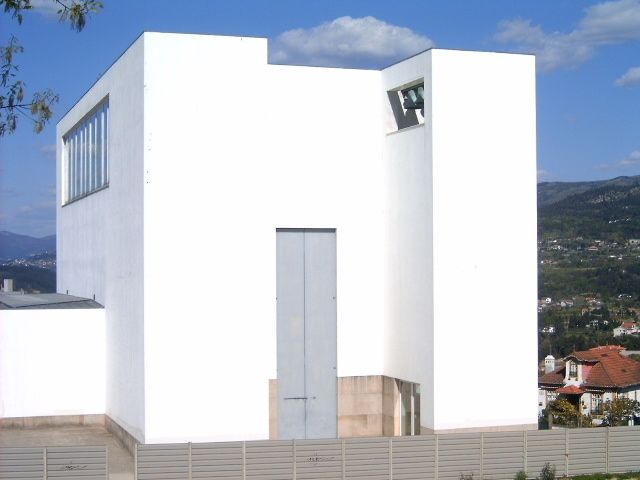The Church of Santa Maria and the Parish Centre of Marco de Canaveses, designed by Álvaro Siza, stands as a testament to the harmonious blend of modern architectural innovation and traditional religious space. Siza’s vision was to create a structure that integrates with its environment through differentiation, a concept that is evident in the church’s unique design.
Situated on the outskirts of a densely built urban area, the church is strategically positioned to address the site’s elevation changes and the surrounding poor-quality buildings. Siza’s approach was to craft a sanctuary that not only serves its religious purpose but also elevates the aesthetic quality of its locale. The building unfolds over two levels, with the upper level dedicated to the congregation and the lower level housing the mortuary chapel. This spatial arrangement allows for a seamless flow of movement and a clear distinction between the sacred and the contemplative.
The church’s design challenges traditional Catholic architecture with its use of light and space. Three tall openings flood the interior with diffuse light, creating an ethereal atmosphere that contrasts with the typical introspective ambiance of religious spaces. A long, low window extends the interior view outward, inviting the landscape into the sacred space and encouraging a dialogue between the interior and exterior.
Siza’s decision to place the statue of the Virgin without a pedestal further emphasizes the church’s modernist approach, sparking debate about the evolution of religious spaces. This choice reflects Siza’s belief in the power of architecture to provoke thought and discussion, as he once remarked, “Architecture is not about creating a monument, but about creating a space that speaks to the people.”
The materials used in the construction are carefully selected to enhance the building’s interaction with its surroundings. The use of concrete and white plaster creates a minimalist aesthetic that contrasts with the vibrant natural landscape, while the cloister and parish center provide a buffer from the busy road, creating a serene churchyard that overlooks the valley.
Father Nuno Higino’s unwavering support was instrumental in realizing Siza’s vision, ensuring that the church not only serves its community but also stands as a symbol of architectural innovation and spiritual reflection.

